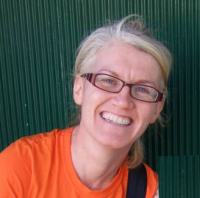Here Dr Nóra Bermingham discusses the significance of The Drumclay Bird Headed Comb. The comb is one of our objects dating to the Early Christian Period.
A small but elegant comb was recovered from within a possible house during the excavation of Drumclay Crannog, Co. Fermanagh. The crannóg was located just northeast of Enniskillen and was excavated over a ten-month period from June 2012 to April 2013. The comb’s discovery was greeted with excitement as here was an object that at the very least allowed for closer dating of the archaeological horizons then exposed. The comb is a rare find, one of only eight known from Ireland, and dates to between the 7th and mid-8th century AD. It is a finely made personal object, most likely cared for and used by a select few. The comb was made from red deer antler, and is decorated with two facing birds’ heads and is unlike any other found on the crannóg. It is single piece, high-backed comb with a rounded back into which two birds’ heads have been carved. The comb has a suspension hole near the top that allowed allow it be strung, and could have been worn or stored elsewhere for safekeeping. It may have been an heirloom that at some point was incorporated into a house floor, near the hearth. Equally it may represent a lost or discarded find, luckily preserved to us by the waterlogged conditions on-site. The possibility that it was deposited as some sort of charm, either at the end or start of an episode of occupation, has yet to be explored.
The impact this comb had on myself and the rest of the team was tangible. This pretty, charming and well-made object seemed to come alive and transport us back in time almost instantly. Everybody has a comb and knows just how personal an item it can be. It might be shared, but not necessarily widely. It might be passed down from person to person, (I still use my mother’s hairbrushes for example), especially in the centuries preceding the industrial revolution. Despite being immersed in the crannóg for months, and despite having recovered thousands of other objects by the time this comb was found, this one item, spoke louder, not least because it could be dated in its own right but also because everybody has used a comb and so can instantly relate to the people who once owned and then abandoned this piece.
This comb is one of 34 examples from the crannóg and one of hundreds of other antler and bone finds recovered. Eventually it will be studied as part of the wider antler and bone assemblage from the crannóg and this is likely to reveal other insights and avenues for discussion than those raised here. It remains however, one of my favourite objects recovered from among the several thousand individual finds made on the crannóg.
Dr Nóra Bermingham
November 2014



